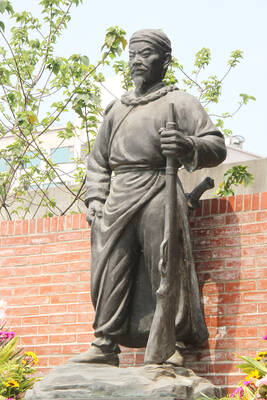When I first heard Kenneth Branagh had directed a film version of Mozart’s The Magic Flute set during the First World War my hopes weren’t high. In fact it’s by a long way the most lovable and refreshing version of the opera I’ve ever seen.
Playfulness is its main characteristic, and if you think this a little out of place in a battle setting you’d be right. Mozart was a product of the 18th-century Enlightenment, and his interests in Zoroastrianism and Masonry led him to a dialectic of darkness versus light. Branagh rightly concludes that these days darkness equals war, and light equals love, and even sex. So he sets the opera with troops marching around and frightened soldiers, but much of the latter part inside a French chateau. The gruesomeness of war isn’t in the foreground, in other words, but this product is so delightful it hardly matters.
The overall effect is reminiscent of the Dennis Potter TV miniseries The Singing Detective and Pennies from Heaven of the 1980s, or perhaps a Baz Luhrmann movie — a fantastic extravaganza whose serious themes don’t detract from its genuine charm. This fantasy-based playfulness even extends to the Web site — access www.magicflutefilm.com for an absorbing experience!
The Internet is full of complaints that there aren’t any subtitles, together with allegations that the entire product has been “banned in the US.” But buy it here in Taiwan, where it’s been issued by the Lien Yin company and sells at around NT$580, and you’ll have both English and Chinese subtitles. It’s sung in English, but the lyrics have been re-translated by the UK comedian and polymath Stephen Fry (Oscar Wilde in the 1997 film Wilde) and are often funny beyond belief. Sometimes you need the English subtitles just to convince yourself that what you heard was really correct.
Some critics have suggested musical values are sacrificed to images of inflated plastic lips in the middle of fields, but this is far from the truth. Rene Pape (who sings Sarastro) is one of opera’s great bass voices, for instance, and though the younger soloists have undoubtedly been chosen in part for their visual allure, this is musically an extremely satisfying rendition. The American Benjamin Jay Davis makes a superbly comic Papageno, while UK discovery Amy Carson is a lovable Pamina.
With Christmas on the way, this is undoubtedly my Number One recommendation for a high-quality peace-and-love-spreading gift.
When the Bolshoi Ballet came to London’s Covent Garden in 1956 audiences were taken aback by the boisterousness of the performances, which contrasted strongly with the fey sentimentality that characterized much of British ballet. Several items were filmed and the result released in UK cinemas, and this is the material that Deutsche Grammophon has now re-released on DVD.
The sound quality is raw at best — surprisingly, as many fine studio recordings were made in that era. Even so, the dancing makes this a spectacular as well as a historic product. Most notable is the legendary Galina Ulanova, by this time aged 46. You see her in Saint-Saens’ The Dying Swan looking far from delicate, more like a tough animal dying only very reluctantly. She’s then seen in Giselle, given here complete. Every ballet fan will seize this DVD, simply because Ulanova is far and away the most celebrated Russian ballerina of her era.
Among Yo-Yo Ma’s many virtues, an openness to many musical traditions and a refusal to lower his standards in his many collaborations rank high. In his new Christmas CD Songs of Joy and Peace there are guest appearances from Alison Krauss, James Taylor (singing George Harrison’s Here Comes the Sun) and Dave Brubeck, now 87, plus his cellist son Matt.
Ma is also a world music enthusiast, and there are contributions from Cuban jazz clarinetist and saxophonist Paquito D’Rivera, Canadian fiddler Natalie MacMaster, and seven members of the Brazilian Assad family. Ma says he wanted this CD to be like a party, and though it feels too tasteful for that, and certainly never gets wild, it’s nonetheless a welcome contribution to the Christmas spirit.
Lastly, Taiwan’s National Symphony Orchestra (NSO) has released a new pair of CDs in its NSO Live series. They contain Shostakovich’s Fourth Symphony and Richard Strauss’ Ein Heldenleben (A Hero’s Life), recorded at concerts in 2006 and 2007 respectively. The conductor was Lu Shao-chia (呂紹嘉).
Fine though the Strauss performance is, it’s the Shostakovich symphony that’s the masterpiece. Completed in 1936 when the 29-year-old composer had just been officially condemned by the Communist Party, it’s an astonishing work. Too serious for official taste, and so liable to be suspected of containing criticism officialdom couldn’t understand, but others might, Shostakovich put it away in a drawer and it wasn’t performed for another 30 years.
It works on a gigantic scale and as a result the NSO, no tub-thumping orchestra, is in many ways its ideal interpreter. This performance must rank high among world recordings of the Fourth, and it’s a pity it isn’t being issued by an international record company. It’s superb, anyway, and the easiest way to find it is at any NSO performance
— BRADLEY WINTERTON

One of the biggest sore spots in Taiwan’s historical friendship with the US came in 1979 when US president Jimmy Carter broke off formal diplomatic relations with Taiwan’s Republic of China (ROC) government so that the US could establish relations with the People’s Republic of China (PRC). Taiwan’s derecognition came purely at China’s insistence, and the US took the deal. Retired American diplomat John Tkacik, who for almost decade surrounding that schism, from 1974 to 1982, worked in embassies in Taipei and Beijing and at the Taiwan Desk in Washington DC, recently argued in the Taipei Times that “President Carter’s derecognition

This year will go down in the history books. Taiwan faces enormous turmoil and uncertainty in the coming months. Which political parties are in a good position to handle big changes? All of the main parties are beset with challenges. Taking stock, this column examined the Taiwan People’s Party (TPP) (“Huang Kuo-chang’s choking the life out of the TPP,” May 28, page 12), the Democratic Progressive Party (DPP) (“Challenges amid choppy waters for the DPP,” June 14, page 12) and the Chinese Nationalist Party (KMT) (“KMT struggles to seize opportunities as ‘interesting times’ loom,” June 20, page 11). Times like these can

JUNE 30 to JULY 6 After being routed by the Japanese in the bloody battle of Baguashan (八卦山), Hsu Hsiang (徐驤) and a handful of surviving Hakka fighters sped toward Tainan. There, he would meet with Liu Yung-fu (劉永福), leader of the Black Flag Army who had assumed control of the resisting Republic of Formosa after its president and vice-president fled to China. Hsu, who had been fighting non-stop for over two months from Taoyuan to Changhua, was reportedly injured and exhausted. As the story goes, Liu advised that Hsu take shelter in China to recover and regroup, but Hsu steadfastly

You can tell a lot about a generation from the contents of their cool box: nowadays the barbecue ice bucket is likely to be filled with hard seltzers, non-alcoholic beers and fluorescent BuzzBallz — a particular favorite among Gen Z. Two decades ago, it was WKD, Bacardi Breezers and the odd Smirnoff Ice bobbing in a puddle of melted ice. And while nostalgia may have brought back some alcopops, the new wave of ready-to-drink (RTD) options look and taste noticeably different. It is not just the drinks that have changed, but drinking habits too, driven in part by more health-conscious consumers and